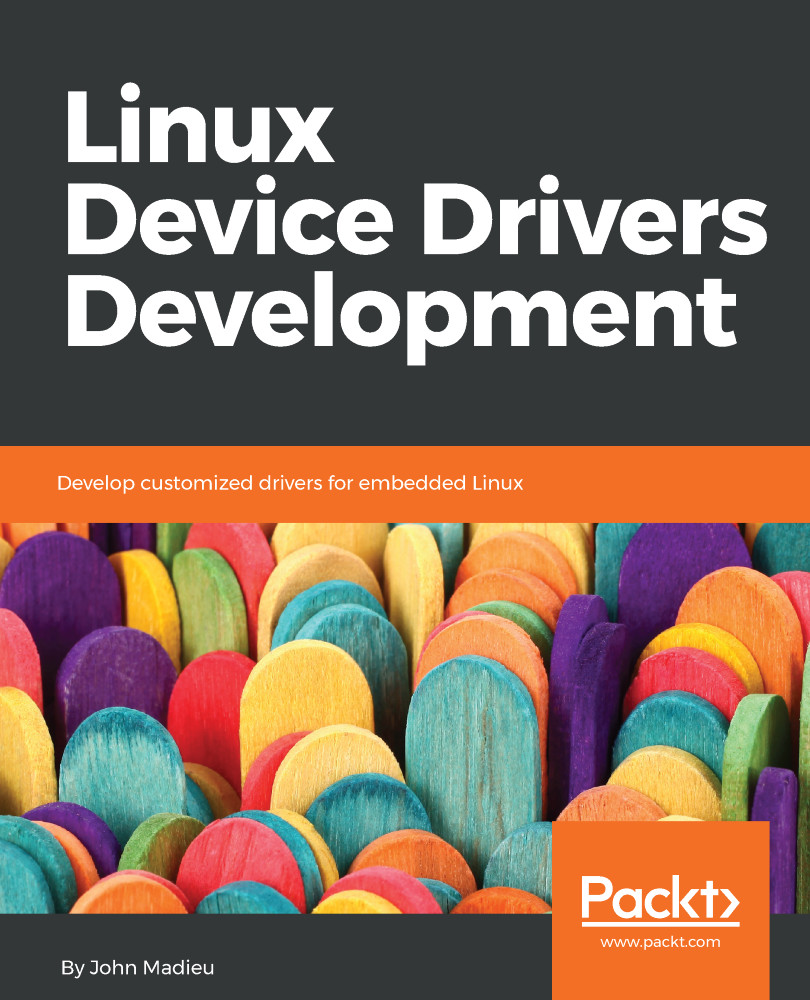Inputting device structures
First of all, the main file to include, in order to interface with the input subsystem is linux/input.h:
#include <linux/input.h>
No matter what type of input device it is, and what type of event it sends, an input device is represented in the kernel as an instance of struct input_dev:
struct input_dev {
const char *name;
const char *phys;
unsigned long evbit[BITS_TO_LONGS(EV_CNT)];
unsigned long keybit[BITS_TO_LONGS(KEY_CNT)];
unsigned long relbit[BITS_TO_LONGS(REL_CNT)];
unsigned long absbit[BITS_TO_LONGS(ABS_CNT)];
unsigned long mscbit[BITS_TO_LONGS(MSC_CNT)];
unsigned int repeat_key;
int rep[REP_CNT];
struct input_absinfo *absinfo;
unsigned long key[BITS_TO_LONGS(KEY_CNT)];
int (*open)(struct input_dev *dev);
void (*close)(struct input_dev *dev);
unsigned int users;
struct device dev;
unsigned int num_vals;
unsigned int max_vals;
struct input_value *vals;
bool devres_managed;
}; The...

































































